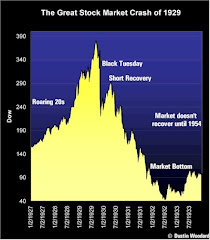Today in Ontario the Sunshine List of employees earning over $ 100,000 was released. It always makes a big splash. Ontario's Sunshine list - the salaries I question: Blizzard
Super Sized Splash
The Canadian Taxpayers Federation did a quick tally on the numbers from the Sunshine List.
Ontario public sector $100,000 club grows by 19%
One of the tidbits they found was that there were 164 on the list who earned over $400,000. A quick analysis shows that if all are fully qualified for their pensions the value of these 164 pensions will be over $700 Million. One of my favorites is U of Calgary president eligible for $4.5M pension
Super Sized Pensions
Public sector pensions are estimated at 70% of salary. This means a $400,000 salary will gain a $280,000 annual pension.
The cash value of the pension is 16 times the annual income amount. So a $280,000 pension has a value of $4.4 MILLION. This refers to the amount of money you or I would need in a bank account in order to fund a pension of this magnitude. It assumes the pension starts at age 55 and pays until age 82, the Canadian life expectancy.
Most public sector employees are eligible for pension at age 55. If they retire at this age and live to the average life expectancy of 82, this is 27 years. A pension of $280,000 over 27 years adds up to $ 7.5 Million. The lower amount of $4.4 Million assumes that earning on the pension will make up the extra. Hence, 164 pensions valued at $4.4 Million each is about $721 Million.
The lump sum is also know as fair-value of the pension or present value of a member's earned pension. In simple terms, it is the amount of money that would have to be invested today to pay for the member's future pension.
Super Sized Taxpayer Contributions
Pension limits in Canada are around $82,000. In order to get these higher pensions a special pension rule was created for the public sector. Called a SERP, it allows for an unlimited amount of funding. We looked at this in an earlier blog.
Statscan shows that these plans have accumulated $199 BILLION to pay the pensions of these Super-Sized pensions. Note these are called Government Consolidated Revenue Arrangements in this illustration.
Taxpayers have contributed more into these plans ($199 Billion) than we have accumulated into the CPP plan. ($122 Billion). Note also that of the $1.2 Trillion in pension funds, $805 Billion of this has been funded by taxpayers on behalf of public sector employees.
Not only do these guys get the big bank roll today, the ice cream on the pie is the pensions to come. In fact most of these guys will earn far more in their retirement years than they ever earned working. Remember they did not earn $400,000 for their entire careers.
All this is funded by taxpayers earning an average wage of $40,000 per year.
As Kevin Gaudet says:
“There is an increasing divide between those who work in the private sector and those privileged and protected workers in the public sector. This has to end,”











